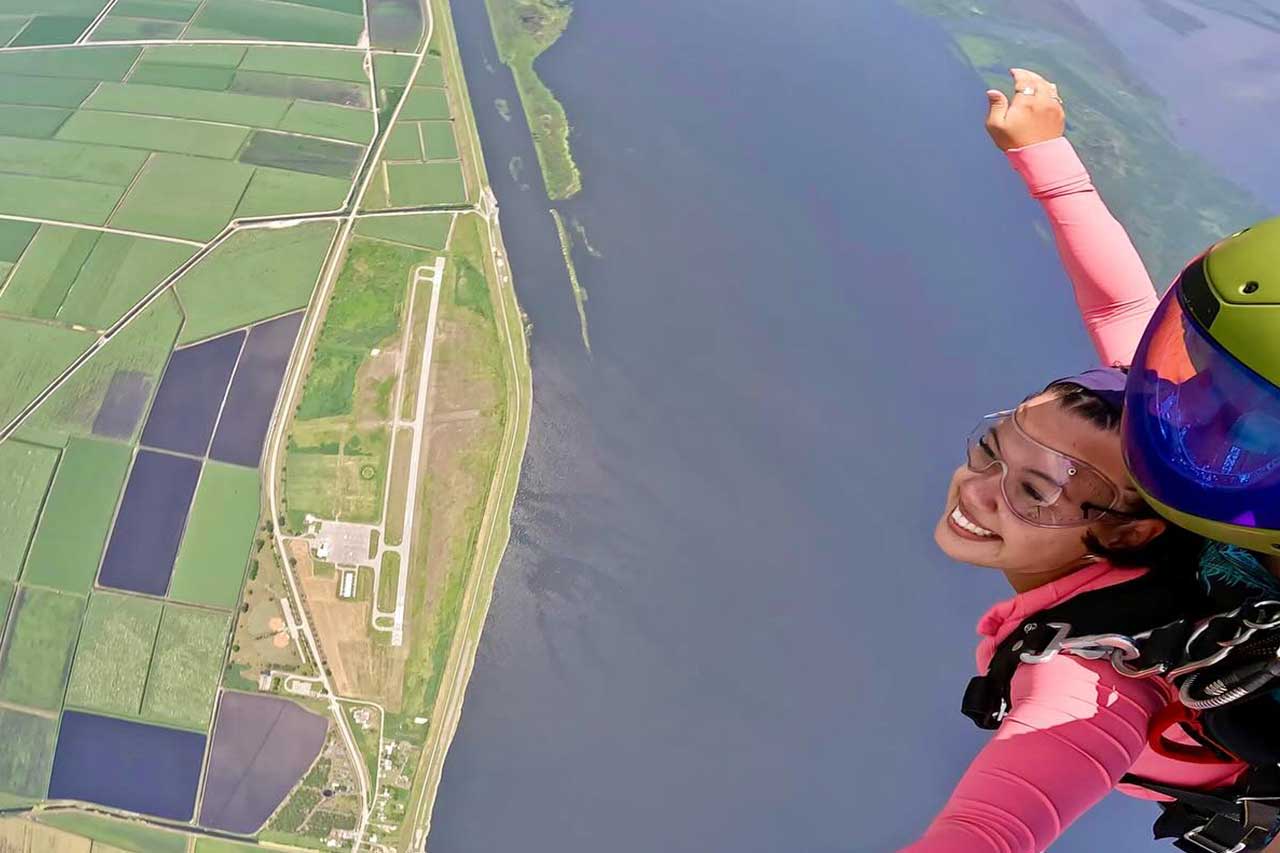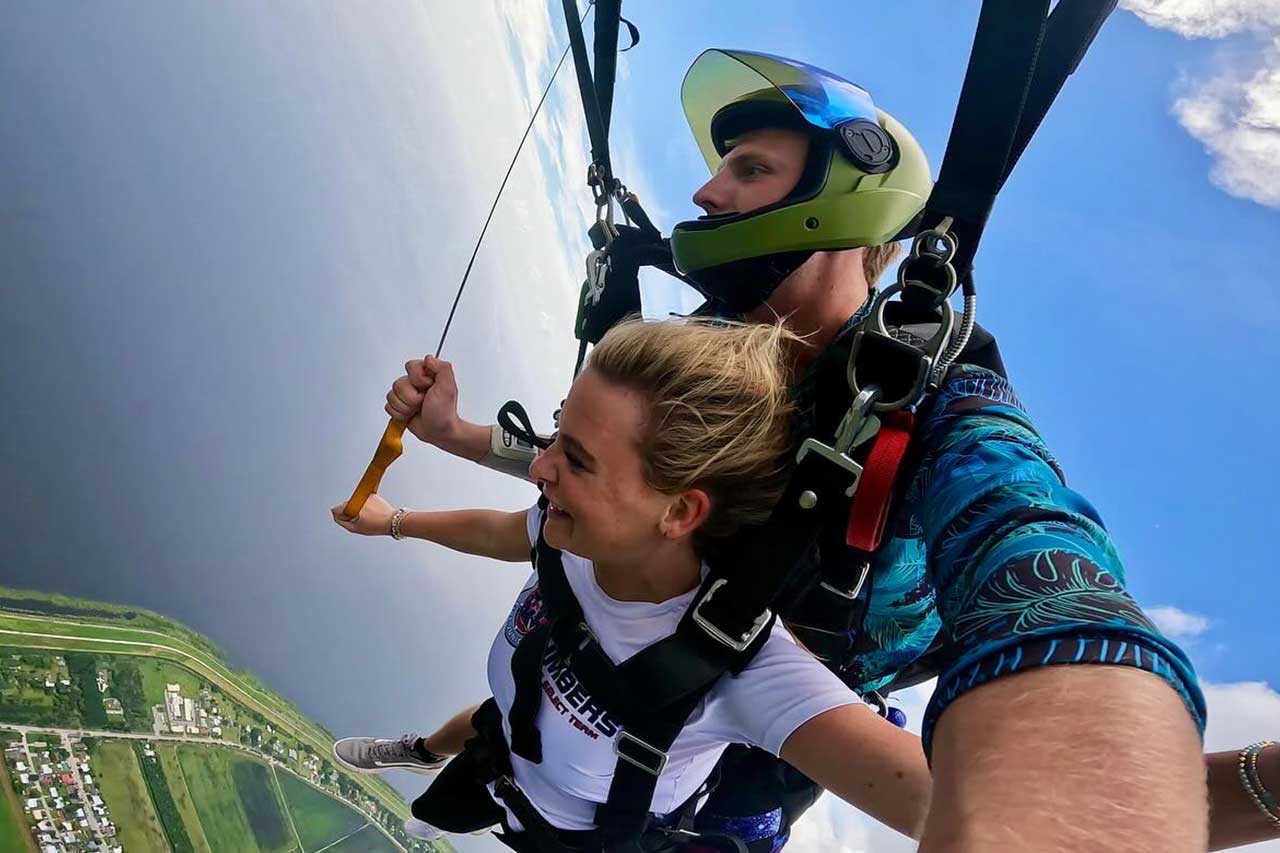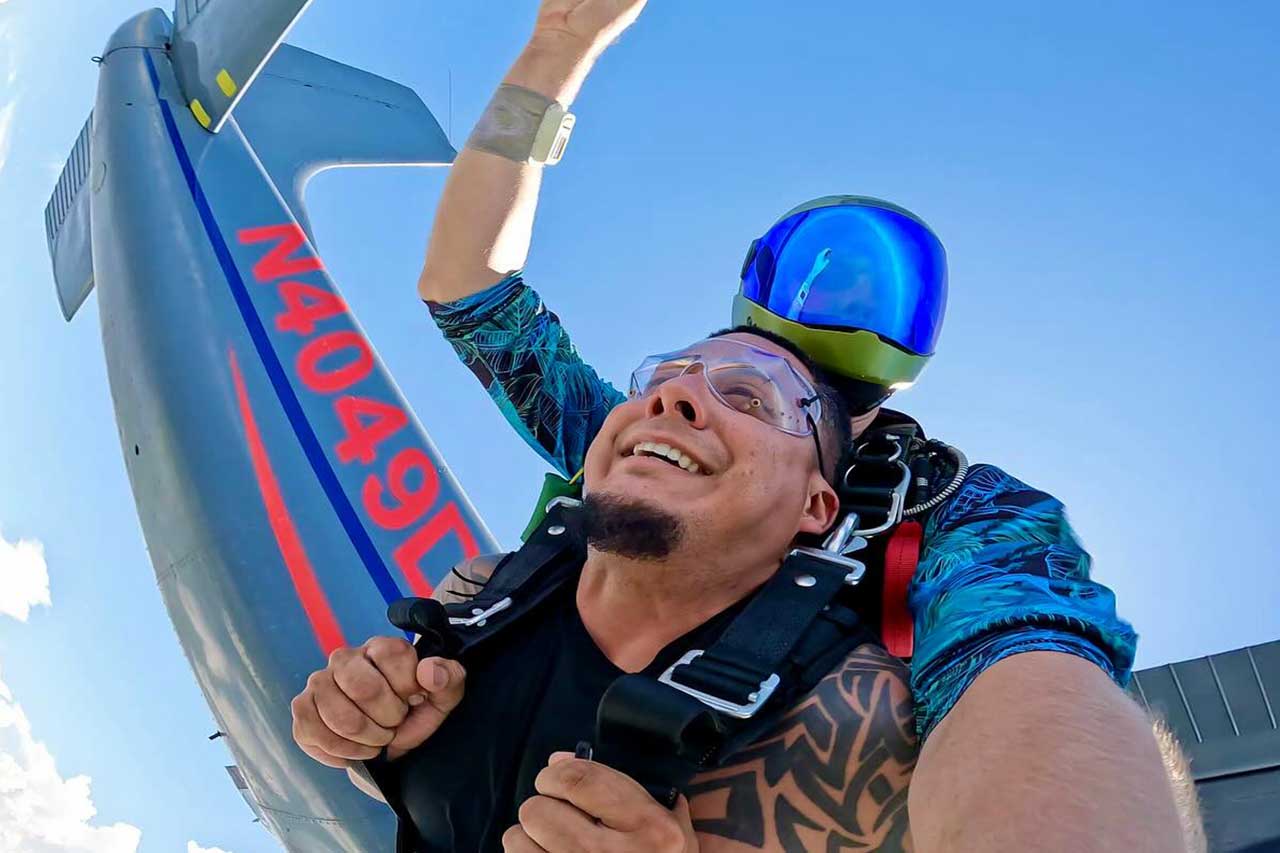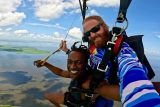How Fast Do Tandem Skydivers Fall?
Tandem Skydiving
Posted by: Skydive Palm Beach
10 months ago
How fast do tandem skydivers fall? Is it the same speed as solo jumpers? What about that brick vs feather analogy everyone talked about in physics class (that no one ever figured out the answer to) – do skydivers just flutter down like a bunch of feathers?!
For first-timers, the speed of descent during a skydive can be both fascinating and a bit of a mystery – what does it actually feel like to fall at terminal velocity? Let’s jump into the fall rate of tandem skydivers, explain the science behind terminal velocity, and get to the bottom of the age-old question: How fast do you fall when skydiving?

What Is Terminal Velocity?
How fast do you fall in skydiving? The quick answer: terminal velocity! Now … what exactly does that mean? Terminal velocity is the fastest speed a skydiver (or object) can reach in freefall.
Imagine you’re riding your bicycle down a hill. At first, you’re picking up speed at a pretty quick rate, because gravity is pulling you down the hill. As you gain more and more momentum, the air starts to push against you and your bike pretty hard.
Eventually, you reach a speed where the wind is pushing against you so hard that you physically cannot accelerate any more, even if you pedal really fast. The top speed where gravity and resistance reach an equilibrium is terminal velocity! Sooo … how exactly does this work during a skydive?
How Fast Is Skydiving?
Skydivers have an average terminal velocity of 120 mph, and this is dependent on a few factors. When these factors are altered, fall rate changes:
Body position.
The way you position your body during skydiving freefall plays a huge role in how fast you fall. When you arch with their belly toward the earth (the standard tandem skydiving position), you maximize your surface area (and therefore your air resistance), causing you to fall at around 120 mph.
If you were to get a little wild with it and start flying in a head-up or head-down position – called free-flying – you would reduce your surface area and fall faster. Making any adjustment to body position can alter fall rate! \\

Drag.
The force of air resistance pushing against us as we fall is called drag. It’s what allows us to eventually stabilize at your max speed. Although many factors, such as body position, affect drag, skydivers often relate drag to clothing choice. For example, to fall slower, you would wear “more drag” by choosing a baggier jumpsuit. If you wanted to speed up, you’d opt for something tight fitting.
Weight and size.
A skydiver’s “exit weight” is how much you weigh when you’re ready to jump – your body weight + your rig (which weighs around 50 lbs for tandems). The overall mass of a tandem skydiving pair is much more than that of a solo jumper. Your weight and body size determines how quickly you reach terminal velocity. Heavier jumpers will fall faster, while lighter jumpers will fall slower – this is all due to the force of gravity at work against them.
Fun fact: There’s a discipline in skydiving called speed skydiving where skydivers have the sole goal of reaching maximum velocity. These daredevils fly their bodies in a head-down position to achieve wickedly fast speeds with minimal air resistance.
Why Do Tandem Skydivers Fall Faster?
They’re bigger and heavier! Tandem skydives are made up of two people, making the combined weight and size more than a solo jumper.
So, how the heck can single videographers fall in front of tandem skydivers!? Good question. Fall rate adjustments! Adjusting fall rate through clothing choices and body position allows skydivers of various sizes – or solo jumpers and tandems – to soar the skies alongside one another.

What’s A Drogue?
In tandem skydiving, a drogue is a small parachute deployed shortly after exiting the aircraft to help control the fall rate of the pair. Without it, the tandem pair would accelerate to speeds wayyy too fast for a safe parachute deployment. The drogue creates enough drag to slow us down to manageable speeds and aids in stability while during freefall.
So, Does A Feather Or A Brick Fall Faster?
In a vacuum, where there’s no air resistance, both a feather and a brick would fall at the same rate due to gravity, regardless of their weight. However, in the real world with air resistance, the brick falls faster because it has more mass and cuts through the air more efficiently, while the feather encounters more drag relative to its weight and falls more slowly. So, in everyday conditions, the brick falls faster!
Now that you know how fast a skydiver can fall, it’s time to experience terminal velocity for yourself – book your tandem skydive today to see what it’s like to defy gravity and feel the rush of freefall! Blue skies!
Categories:
You May Be Interested In:

What Are The Differences Between A Tandem And Solo Skydive?
4 months ago by Skydive Palm Beach

What to Expect on Your Tandem Jump
6 months ago by Skydive Palm Beach

What It Takes to Become a Tandem Parachute Jump Instructor
8 months ago by Skydive Palm Beach

Why Tandem Skydiving is Perfect for First-Time Jumpers
10 months ago by Skydive Palm Beach
